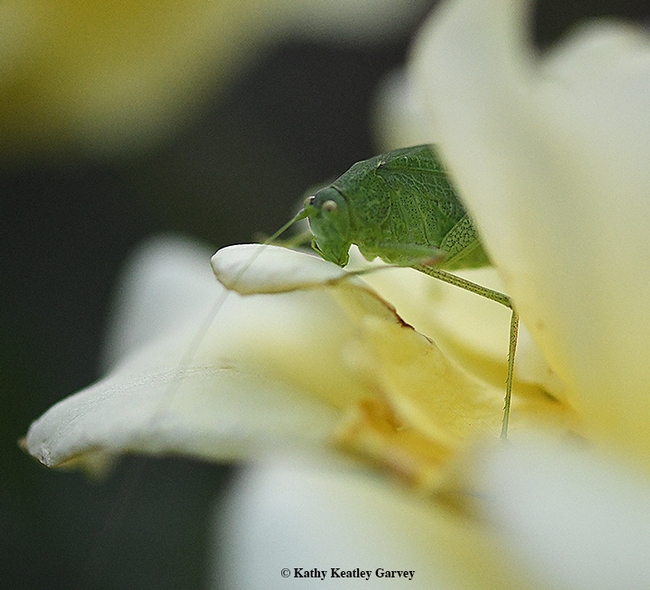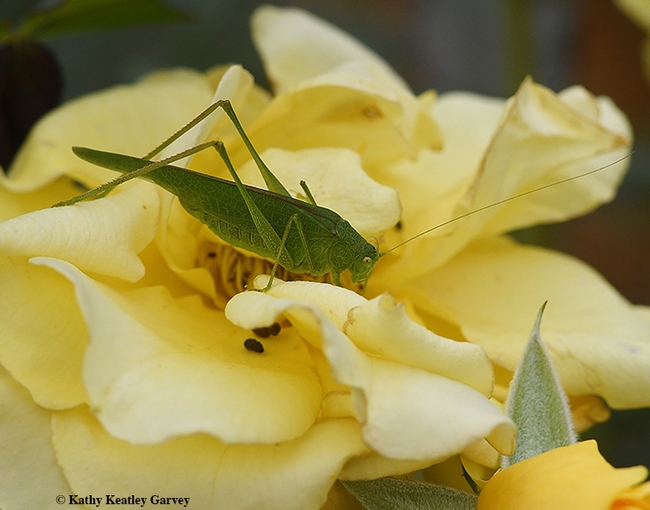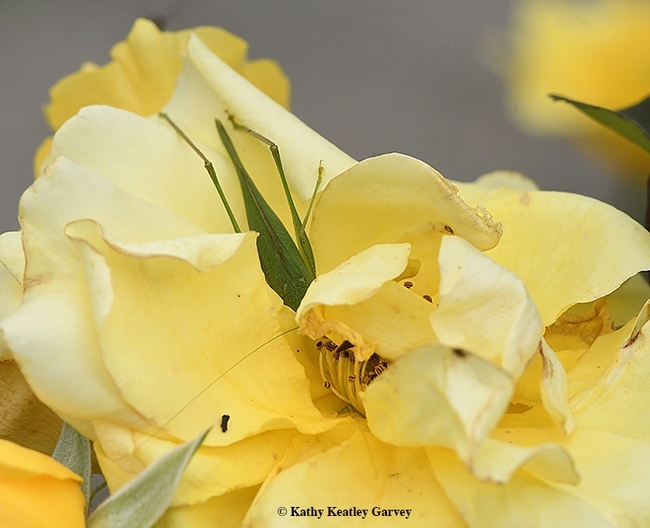It's not a question of whether katydid did or didn't.
She did.
In answer to what-are-we-going-to-see-next-in-insect-sightings-today-in-our-weird-climate-changing patterns, a katydid appeared on our yellow rose bush on Nov. 21 in Vacaville, Calif.
And stayed for several days.
Usually, they are difficult to see in green vegetation, what with their green bodies and detailed venation. It's not good camouflage to hang out on a yellow rose.
"Katydids resemble grasshoppers but have long antennae," according to the UC Statewide Integrated Pest Management Program (UC IPM) in its pest management website on Scudderia furcata. "Female katydids lay their gray, oval 1/8- to 1/4-inch long eggs in two overlapping rows on twigs and leaves or into the edges of their chewing damage. Nymphs appear in April and May and require 2 to 3 months to mature. Katydids produce one generation a year."
They do like fruit, including peach, nectarine, apricot, and pear. "Katydids may feed on leaves or fruit. Katydids do not eat the whole fruit. They often take a bite and move on, allowing the feeding site to become covered with grayish scar tissue and the expanding fruit to become misshapen. Most damage is done by nymphs."
Last summer we saw them feeding on our nectarines, and later we noticed them hanging out on our Mexican sunflower (Tithonia). Usually they're gone by October.
Not this katydid.
Attached Images:


